DV2030 - Final report on the baseline measurement of the state of the assets
Summary
On the initiative of the (petro)chemical industry, central government and the scientific community, and on behalf of the Ministry of Infrastructure and the Environment, a baseline measurement was carried out in 2018 of the condition of the assets in the Dutch (petro)chemical industry. Specific attention was paid to the ageing of the asset base, the consequences this has for the occurrence of process safety incidents and the measures taken by companies to address the ageing of their assets.
Rejuvenation of asset base through increased modernisation investments.
The study shows that the asset base in the Dutch (petro)chemical industry has become considerably younger in recent years. The average age of the asset base is 21 years and the age distribution is even and appropriate for a mature industry and assets with an expected technical life span of 35 to 40 years. The average residual life of the asset base in 2017 was 18 years, with 21% of the asset base having a residual life of less than 10 years. A comparison of these results with those of the MORE4CORE survey for 2014 shows that the asset base has been rejuvenated on average by
25% in the past three years. Moreover, the proportion of assets with a residual life of less than 10 years has decreased from 46% in 2014 to 21% in 2017. This rejuvenation can be attributed to investments in modernisation and new construction.
The level of modernisation investments in 2017 was 3.3% of the replacement value of assets, an increase of 22% compared to 2014. This level can once again be called appropriate: if this level were continuously maintained, the entire asset base would be modernised in 30 years. Investments for the purpose of safety amounted to 0.7% of the replacement value in 2017. The overall level of investment in modernisation seems to be linked to the business cycle, but investment in safety is maintained regardless of the business cycle.
Good technical competitiveness
Internationally, the Dutch chemical and petrochemical industry has an average level of maintenance costs and high technical availability. This means that the technical competitiveness of the sector can be called good. Maintenance costs amounted to 2.8% of the replacement value in 2017. Maintenance costs also depend on the business cycle and, in connection with this, on the intensity with which the assets are used. Maintenance costs also depend on the phase of the service life in which the assets are located. In the last phase of the life cycle, maintenance costs are on average about 40% higher than in the first phase. Earlier research has shown, however, that the increase in maintenance costs over the life span
can be strongly influenced by adequate management and maintenance of the asset.
Companies with a high degree of professionalism in asset management manage to keep this increase to around 15%.
Limited role of ageing assets in process safety incidents
Approximately 16% of process safety incidents in the Dutch chemical and petrochemical industries are to a greater or lesser extent related to ageing assets. These findings are in line with earlier studies by RIVM and the British Health and Safety Executive. The baseline measurement shows that the probability of future process safety incidents, ageing-related or otherwise, is estimated to be higher than three years ago: 42% of respondents estimate that there is a
estimate that there is a reasonable chance of such incidents occurring, compared to 13% in 2014. This increase may be related to increased risk awareness within the industry.
Emergence of asset management and smart technologies
The Dutch (petro)chemical industry is applying a number of measures to remain competitive with an ageing asset base. The most important of these are the process-based shift from maintenance to asset management and the use of smart technologies.
Several companies have switched or are switching from maintenance to asset management. With this shift, planning for the entire life cycle of assets and decisions on modernisation, replacement and life extension become central, whereas previously the focus was on maintaining the condition of the assets. Investment planning generally covers a longer period of typically five to ten years than is the case with more traditional maintenance. Asset management enables companies, among other things, to identify the ageing of assets in time and to start investment projects at the right time.
An essential part of asset management is the lifetime monitoring of assets. This is where companies are making use of new smart technologies in particular. With the growing availability of data on the condition, use and environment of assets, predictive maintenance with big data is seen as one of the most important and promising new techniques. The use of drones for life cycle and condition monitoring is now commonplace in the (petro)chemical industry. To a lesser extent, this applies to the use of inspection robots.


